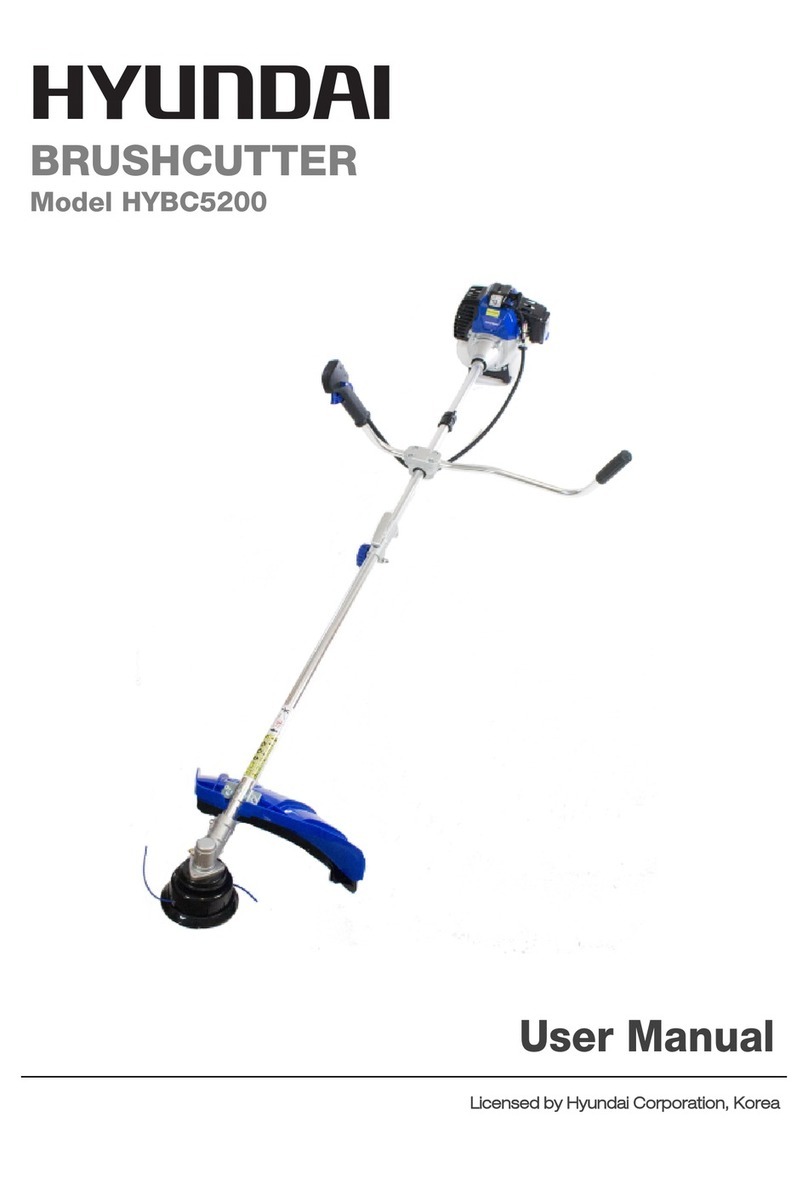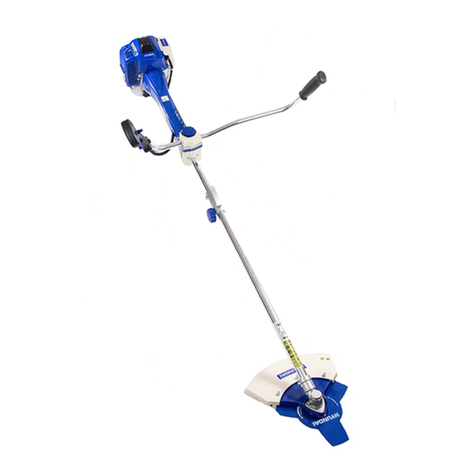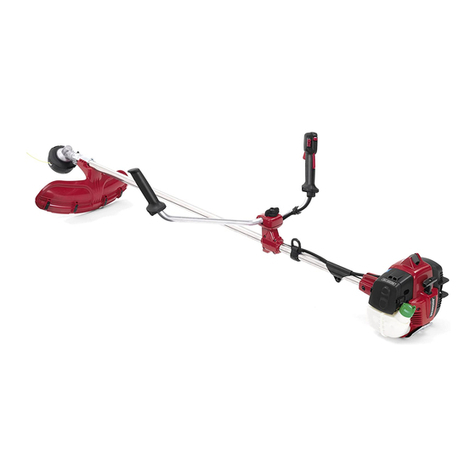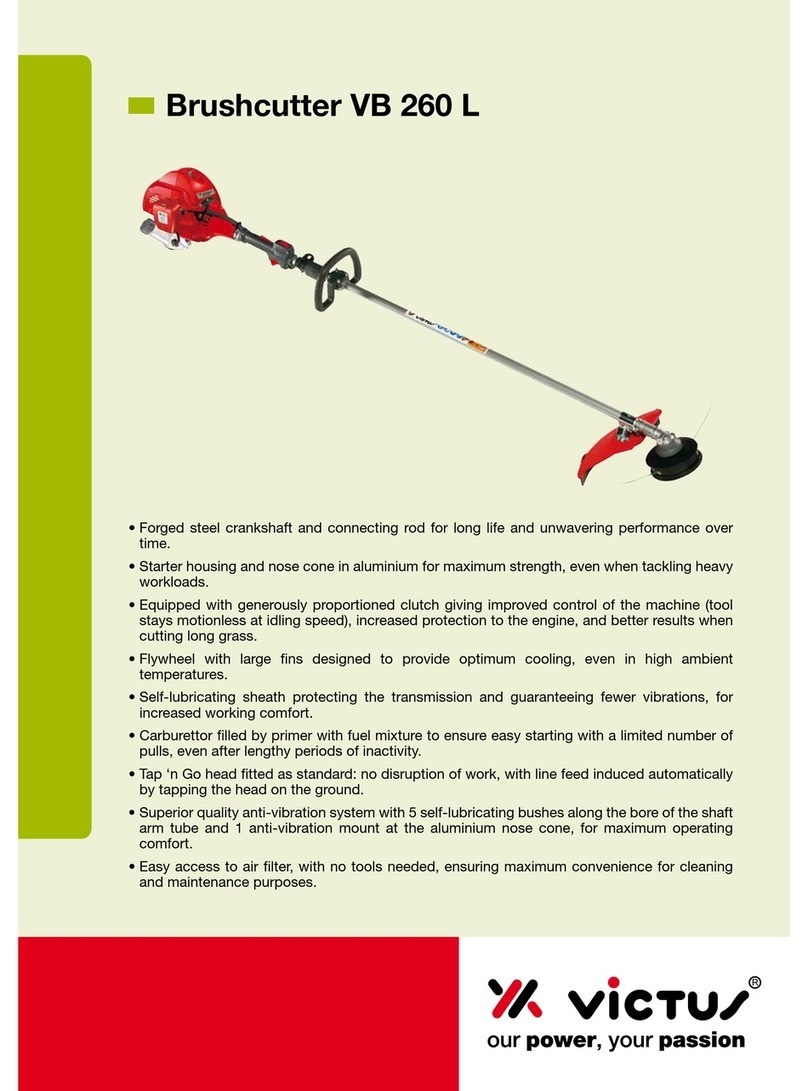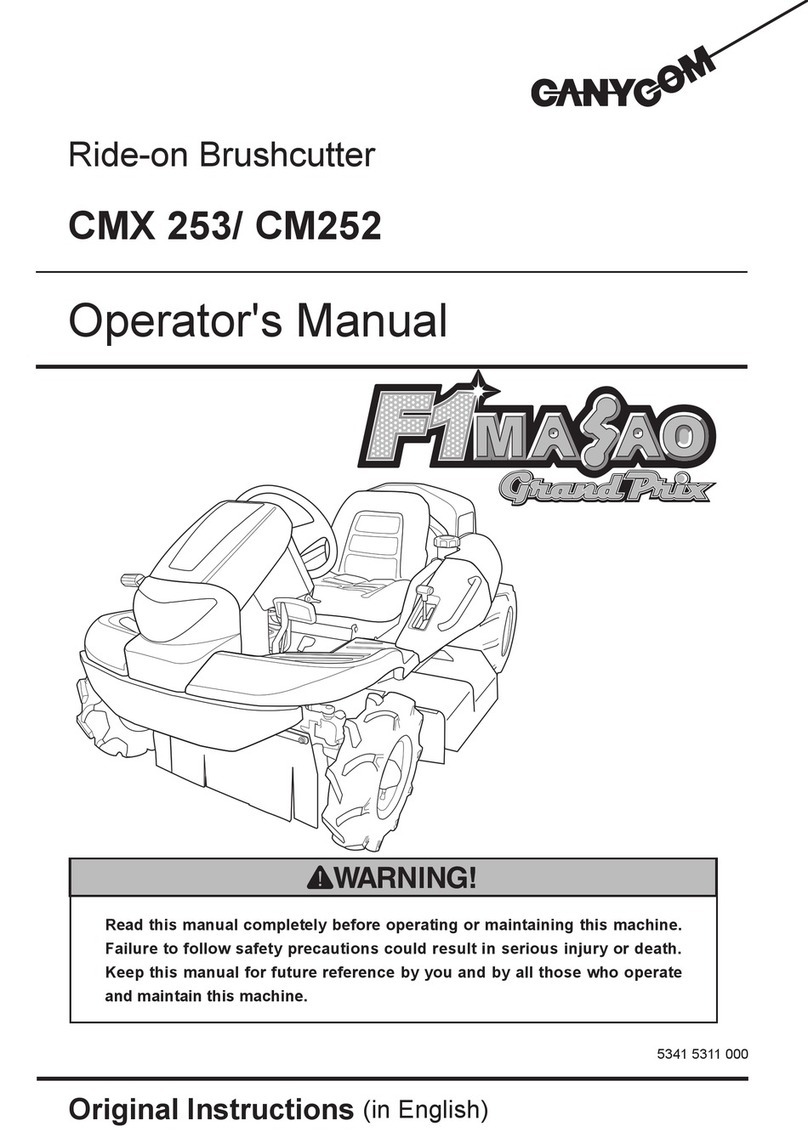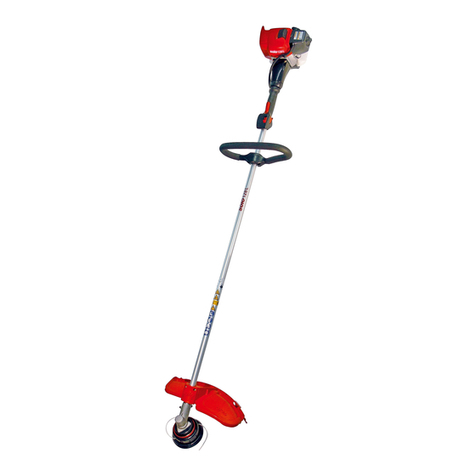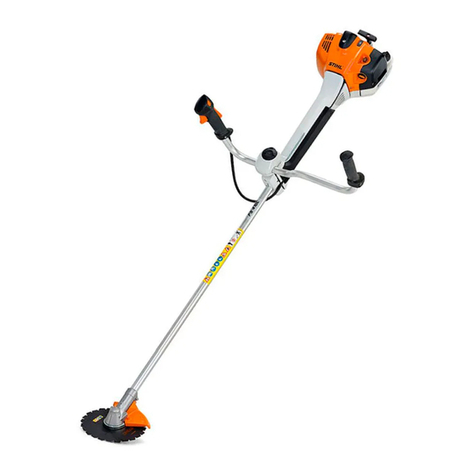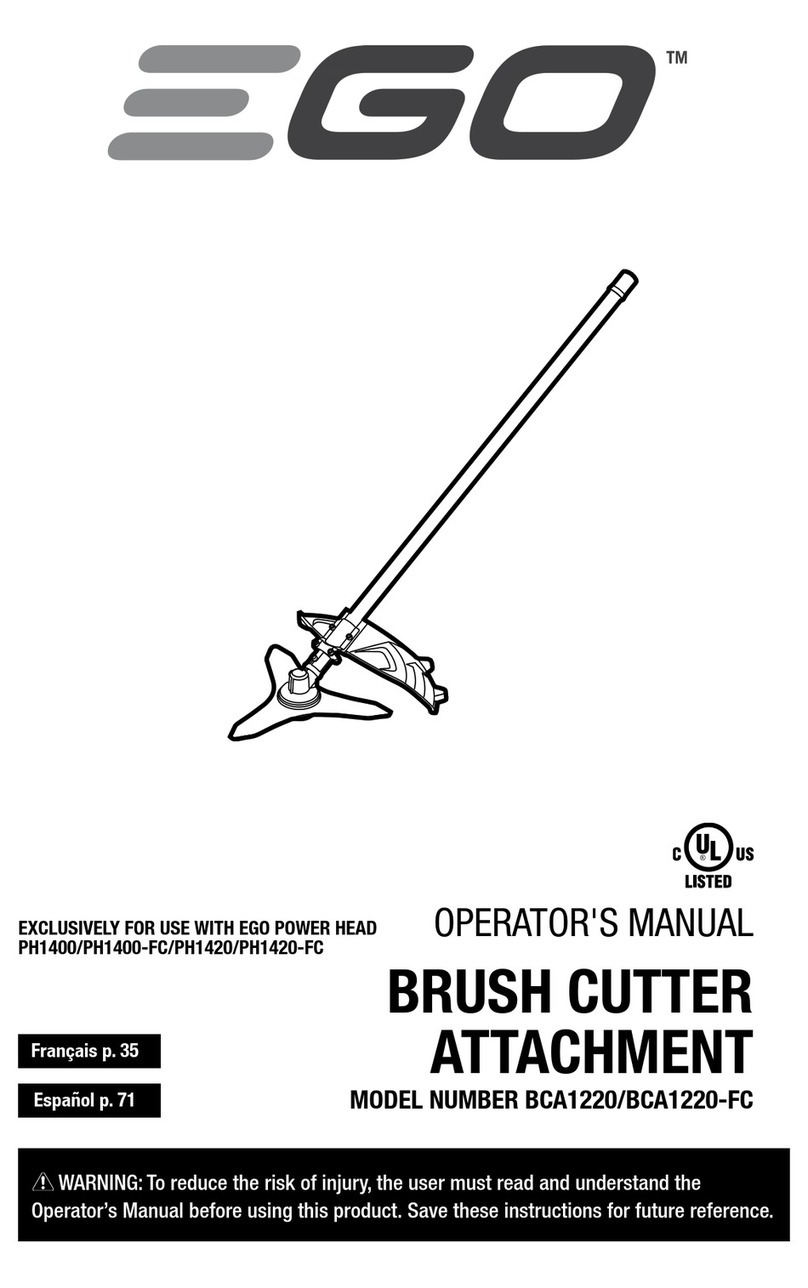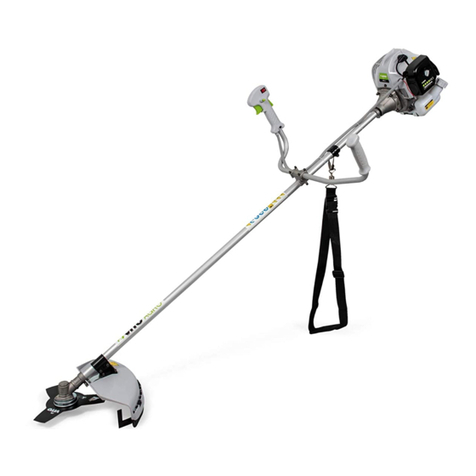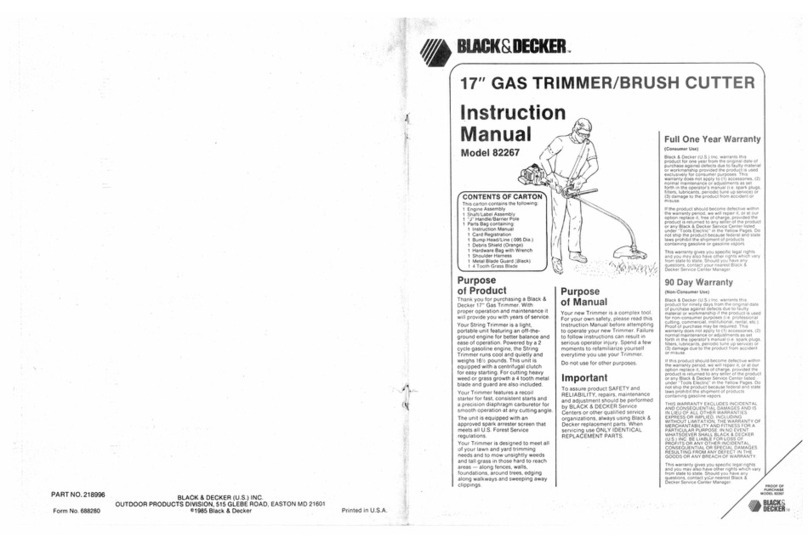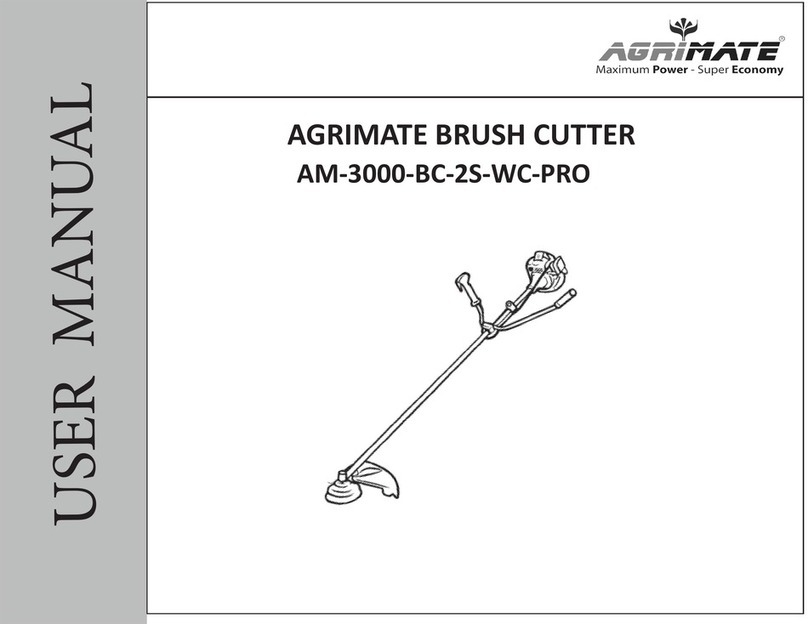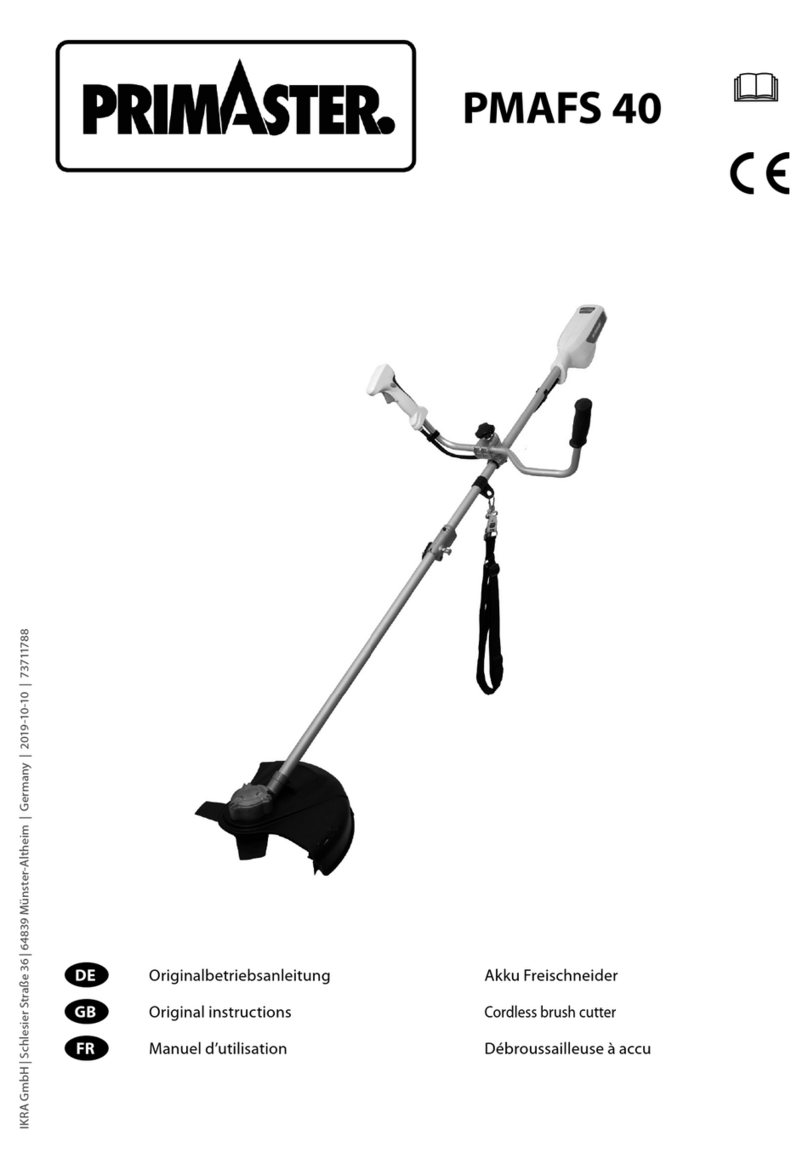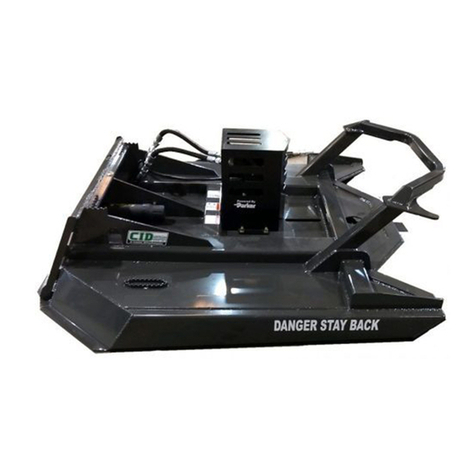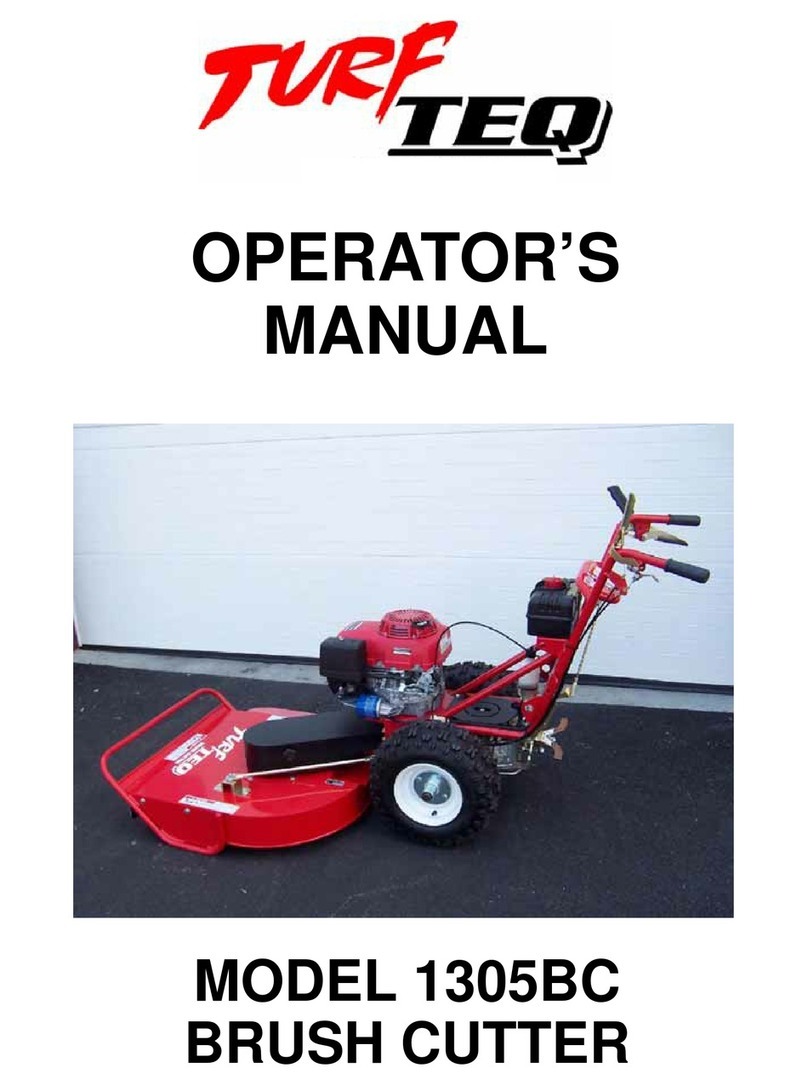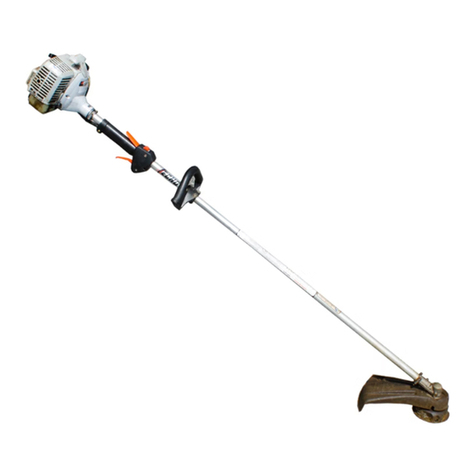
4
ISTRUZIONI
12 Non usate lame metalliche (se applicabile).
13 Non usate disco a sega (se applicabile).
14 Prestate attenzione al lancio di oggetti (se previsto).
15 Non appoggiare la macchina orizzontalmente o in posizioni che facciano leva sulla
protezione in plastica in quanto si potrebbe deformare o spezzare.
16 La macchina é dotata di un dispositivo per la limitazione del rumore che avvia il
motore con qualche attimo di ritardo dopo l’azionamento dell’interruttore.
NORME DI SICUREZZA GENERALI
1) L’uso della macchina è vietato a bambini e persone non perfettamente a conoscenza
delle istruzioni d’uso contenute nel presente manuale. Leggi e regolamenti locali
possono prevedere una età minima per l’uso della macchina.
2) Controllate sempre l’efcienza e l’integrità della macchina; se in cattivo stato, la
macchina può causare pericolo per chi la usa.
3) Prima di utilizzare la macchina e dopo qualsiasi urto, controllate i segni di usura e
di danneggiamento visibili dall’ esterno. Se necessario, portatela presso un centro
di assistenza autorizzato per effettuare le necessarie riparazioni.
4) Non utilizzate la macchina se le protezioni sono danneggiate o mancanti o il dispositivo
di taglio non è ben inserito, ssato o è danneggiato. Vericate la loro efcienza
prima di avviare la macchina.
5) Prima di avviare la macchina, assicuratevi che l’elemento di taglio non sia in contatto
con sassi, detriti o corpi estranei.
6) Operate sempre con abbigliamento adeguato per evitare lesioni al viso e agli occhi,
alle mani, ai piedi al capo e all’udito: usate occhiali o visiera di protezione, stivali alti
oppure scarpe e pantaloni robusti, guanti da lavoro elmetto e cufa.
7) Durante l’avviamento del motore e quando la macchina è in moto, tenete l’elemento
di taglio lontano da ogni parte del corpo, soprattutto mani e piedi.
8) Non avviate la macchina quando è capovolta o non è in posizione di lavoro.
9) Spegnete il motore e staccate la macchina dalla alimentazione elettrica quando: non
la usate, la lasciate incustodita, la pulite, la trasportate da un posto all’altro, il cavo
di alimentazione o di prolunga è danneggiato, togliete o cambiate il dispositivo di
taglio o registrate manualmente la lunghezza del lo di taglio.
10) Non trasportate la macchina tenendola per il cavo elettrico. Usate sempre l’impugnatura.
11) Tenete la macchina lontana da persone, soprattutto bambini, e animali domestici;
interrompete l’uso quando questi si trovano nelle vicinanze; in particolare, mantenere
una distanza di sicurezza come indicato nei punti 10 e 11 della descrizione marcature
e simboli: l’erba tagliata e lanciata può contenere sassi e detriti pericolosi.
12) Quando lavorate mantenete una posizione stabile e sicura.
13) Tenete sempre l’area da tagliare libera da li, sassi e detriti.
14) Durante l’uso non tagliate contro oggetti duri onde evitare il pericolo di lesioni a
voi e alla macchina.
15) Non utilizzate mai la macchina senza la protezione (se fornita separata). Non
utilizzate mai la macchina se la protezione è danneggiata.
ATTENZIONE! La protezione è essenziale per la vostra ed altrui sicurezza e per il
corretto funzionamento della macchina. Il mancato rispetto di tale norma, oltre
a creare un potenziale pericolo, fa decadere i termini della garanzia.
16) Fate attenzione alla lametta taglialo (dove fornita), può causare tagli profondi.
17) Non tentate di fermare il dispositivo di taglio (lo di taglio) con le mani. Lasciate






